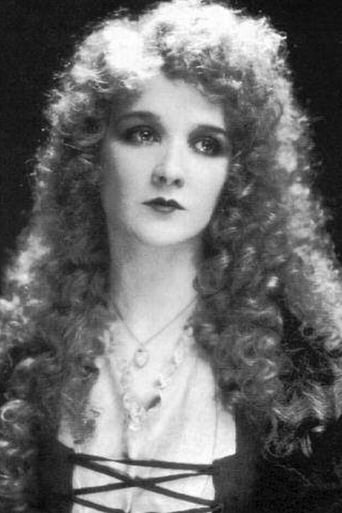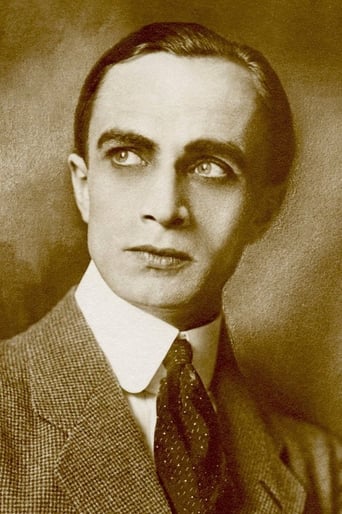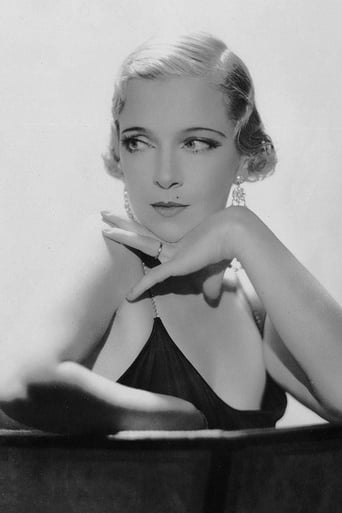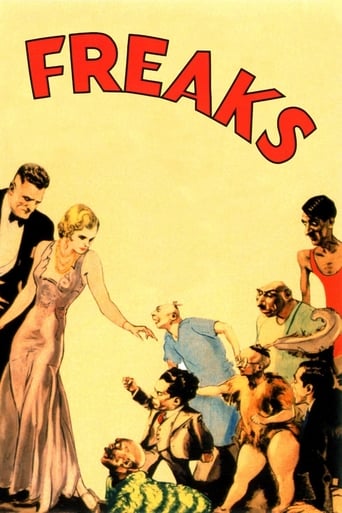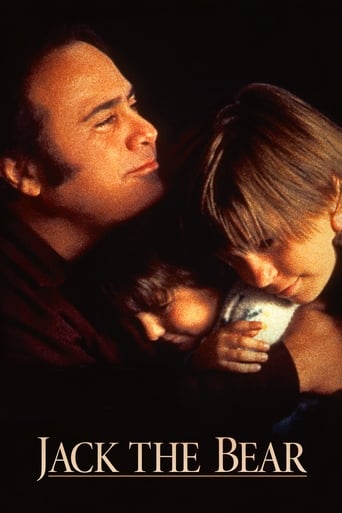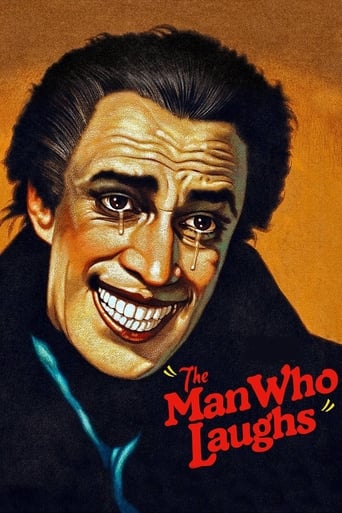
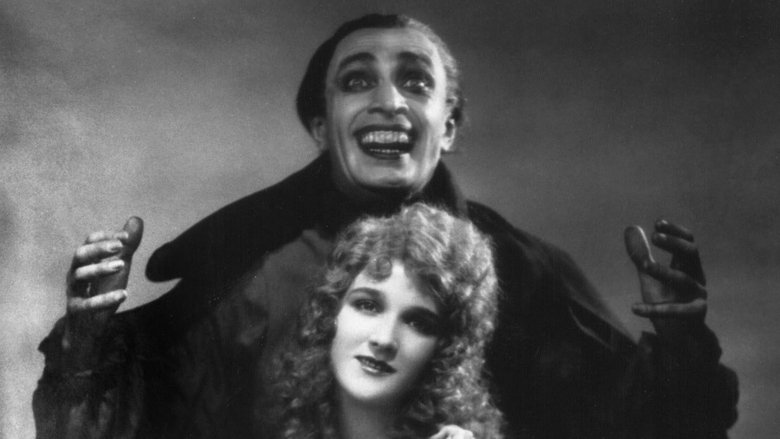
The Man Who Laughs (1928)
Gwynplaine, son of Lord Clancharlie, has a permanent smile carved on his face by the King, in revenge for Gwynplaine's father's treachery. Gwynplaine is adopted by a travelling showman and becomes a popular idol. He falls in love with the blind Dea. The king dies, and his evil jester tries to destroy or corrupt Gwynplaine.
Watch Trailer
Cast
Similar titles
Reviews
You won't be disappointed!
Sadly Over-hyped
I like movies that are aware of what they are selling... without [any] greater aspirations than to make people laugh and that's it.
As somebody who had not heard any of this before, it became a curious phenomenon to sit and watch a film and slowly have the realities begin to click into place.
One of the things I noticed in viewing this was the tight editing. There is little wasted space. Many of the silent films are presented in jerky photographic moments, with the actors emoting and letting us figure out their motivations. This one begins with a sad event. A revolutionary pays the price of his life for not respecting James II. In addition to his execution, his little son is surgically altered to have a perpetual smile, to become the subject of ridicule, seeming to be laughing. The little boy is cast aside by the Gypsies that did this to him and on his journey finds a dead mother clutching a little baby girl. He seeks refuge in the home of a poet and this launches him on a career as a kind of freak actor. The little girl grows to be a beautiful woman, but she is blind. He feels great love for her, but is afraid that other women either hate him or pity him. He becomes a great celebrity, but is submerged in loneliness and depression, having to go in front of audiences each day to be a clown. Mixed into all this is the fact that he is heir to a great position and becomes a threat to the aristocracy and to the Queen. How this is all sorted out is utterly captivating. There is a little Les Miserables and a little Elephant Man in his portrayal. A truly remarkable film.
The man who laughs is one of the saddest movies I've seen in my life, one of those deep movie that leaves you thinking about it for several days. The expressiveness of the eyes of Gwynplaine have shaken me to tears.Despite being made in 1928, with technology and the ways of the time, so distant from the current ways, these differences do not interfere at all. The same has happened to me when I see "Citizen Kane" (1941) by Orson Welles. So "The man who laughs" is a great choice for those who are looking to enter the world of classic films.
Conrad Veidt stars in the movie based on Victor Hugo's novel, L'Homme qui rit. In this silent film, a boy is sold by the King of England to "comprachicos," a word made up by Hugo to represent people who buy children to deform them for the amusement of noblemen and crowds at carnivals. The boy is Gwynplaine (played by Conrad Veidt). Abandoned by the comprachicos, Gwynplaine and an infant girl find shelter with a traveling mountebank Hugo has called Ursus (played by Cesare Gravina) and his pet Homo the wolf (played by Zimbo the dog). The infant grows up to be a beautiful blind blonde they call Dea.*Gwynplaine is cruelly deformed by the comprachicos - his mouth is surgically altered into a permanent grin. Although Veidt may be best remembered as Major Strasser in "Casablanca," a role in which he appeared suitably dissolute, Veidt was a very attractive young man. His appearance here is bizarre because of the character's deformity, a deformity which makes Gwynplaine the object of ridicule and laughter, except of course to Dea, who cannot see him as he looks, but only as he really is. She falls in love with him, naturally; and just as naturally, Gwynplaine cannot accept her love because of his appearance: she'd laugh at him, too, if she could see him.It turns out eventually that Gwynplaine is the sole heir to a dukedom; King James murdered Gwynplaine's father and sold (or dontated) Gwynplaine to the comprachicos, and they abandoned him as a child. Queen Anne came to the throne, and in this story the Queen had it in for a duchess who lived in Gwynplaine's former estate. Gwynplaine is discovered, and the Queen restores Gwynplaine to his estate and orders the duchess to marry him. Gwynplaine is a laughing stock of his peers, of course, so he declines the offer, resigns his peerage, and takes it on the lam. The queen is incensed by his refusal to obey her commands, and she sends the beefeaters after him.Unfortunately, this is the only action in the movie. We know he'll escape to Dea and they'll live happily ever after, but the chase provides some much-needed interest. Most of the film shows us Gwynplaine in his misery, failing to make him sympathetic, heroic, or much of anything else. Produced by Universal, "The Man Who Laughs" was supposed to follow in the footsteps of its popular predecessors, "The Hunchback of Notre Dame" and "Phantom of the Opera," both of which starred Lon Chaney."The Man Who Laughs" was directed by the German Expressionist Paul Leni, who chose Veidt as his star since Chaney was unavailable. Leni's Expressionistic tendencies are obvious throughout the film in both set design and lighting. Unfortunately, American audiences failed to appreciate the look of the movie, and it was not a commercial success. I suspect the unsympathetic hero was also to blame. In "The Hunchback of Notre Dame," for example, Chaney's Quasimodo is a figure of horror, but still the audience roots for him and wishes Esmeralda would fall for him. Here we have no clue at all why Dea would love Gwynplaine. Gwynplaine fails entirely to interest us, much less to engage our sympathies. The reasons to see "The Man Who Laughs" have little to do with the story. Gwynplaine's appearance in "The Man Who Laughs" was the inspiration the Batman comic book villain, The Joker. Heath Ledger's character The Joker in 2008's "The Dark Knight" says his disfigurement was caused by intentional mutilation, a reference to Gwynplaine.Perhaps more important, the design of the movie was based on German expressionism. "The Cabinet of Dr. Caligari" is probably the most famous expressionist film, and it too stars Conrad Veidt who plays Cesare, the Somnambulist - another sideshow freak under the control of a mountebank. Although "The Man Who Laughs" was made in America by Universal Pictures, producer Carl Laemmle had been impressed with a German movie "Waxworks" and called on its director, German Paul Leni, to direct "The Man Who Laughs." The influence of expressionism on Leni is clear in the set and lighting designs, and this influence was not well received by American audiences who thought the lighting too dark and the sets too Germanic to be England. Later reviews of "The Man Who Laughs" praise it for its visual style, if not for its content. Leni was well-known in Germany for his works, and his American debut "The Cat and the Canary" was very well-received.Coming at the end of the Twenties, the movie also came at the end of the Silents. Its release was held up a year so that Universal could couple it with sound of a sort: a music sound track and some sound effects were added, although there was no attempt at coupling sound with the dialogue - the title cards were left in to convey the dialogue.Veidt himself is also of interest. He played Cesare, the Somnambulist in "The Cabinet of Dr. Caligari" and starred in Leni's film "Waxworks." Gwynplaine is a more difficult role because the immobility of his disfigured face prevents Veidt from doing much more than emoting with his eyebrows. Veidt seems to lack Chaney's talent for wringing pity from American audiences no matter what the make up was.*Hugo has a method to his naming. Ursus of course means bear, and Homo means man; Dea means goddess (Dea was played by Mary Philbin). There the method leaves me, as I cannot divine the meaning behind Gwynplaine (which may mean pale plane - or maybe not).
After finally getting to see The Man Who Laughs all the way through, I am struck by how good Conrad Veidt was and also what a wonderful Dracula he would have made. For those who don't know, instead of Tod Browning directing Bela Lugosi in Dracula, we very nearly had Paul Leni directing Veidt as Dracula. Leni's untimely death in 1929 ended that delightful possibility. The scenes in which Veidt hides his carved mouth bring home what an ideal vampire profile he had. And of course, Veidt always oozed of menace when the camera was on.That is one reason his work here impresses me so much. For once he is cast as a sympathetic figure and carries it off quite well. Horrific, pathetic and sympathetic, his Gwynplaine is a complicated character and one of the more memorable ones of the silent era. Of course Mary Philbin is an angel and gives probably her best performance as Dea. Brandon Hurst is wonderfully smarmy as the lecherous jester and steamy Olga Baclanova is great as the spoiled duchess who likes to let her hair down and play with the peasant class. Cesare Gravina is also touching as the kindly Ursus. In fact the whole cast is strong from Josephine Crowell as Queen Anne to Zimbo the Dog as Homo!Of course Leni, in one of his final films, shows his usual deft touch. What a shame it was that two of the silent era's best directors, Leni and Murnau, never got a chance to explore sound film.The Man Who Laughs isn't that easy to find, but is well worth looking for.
